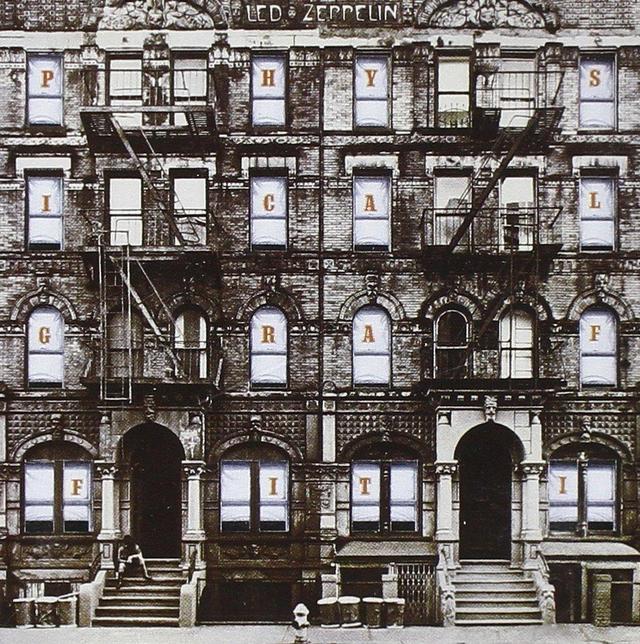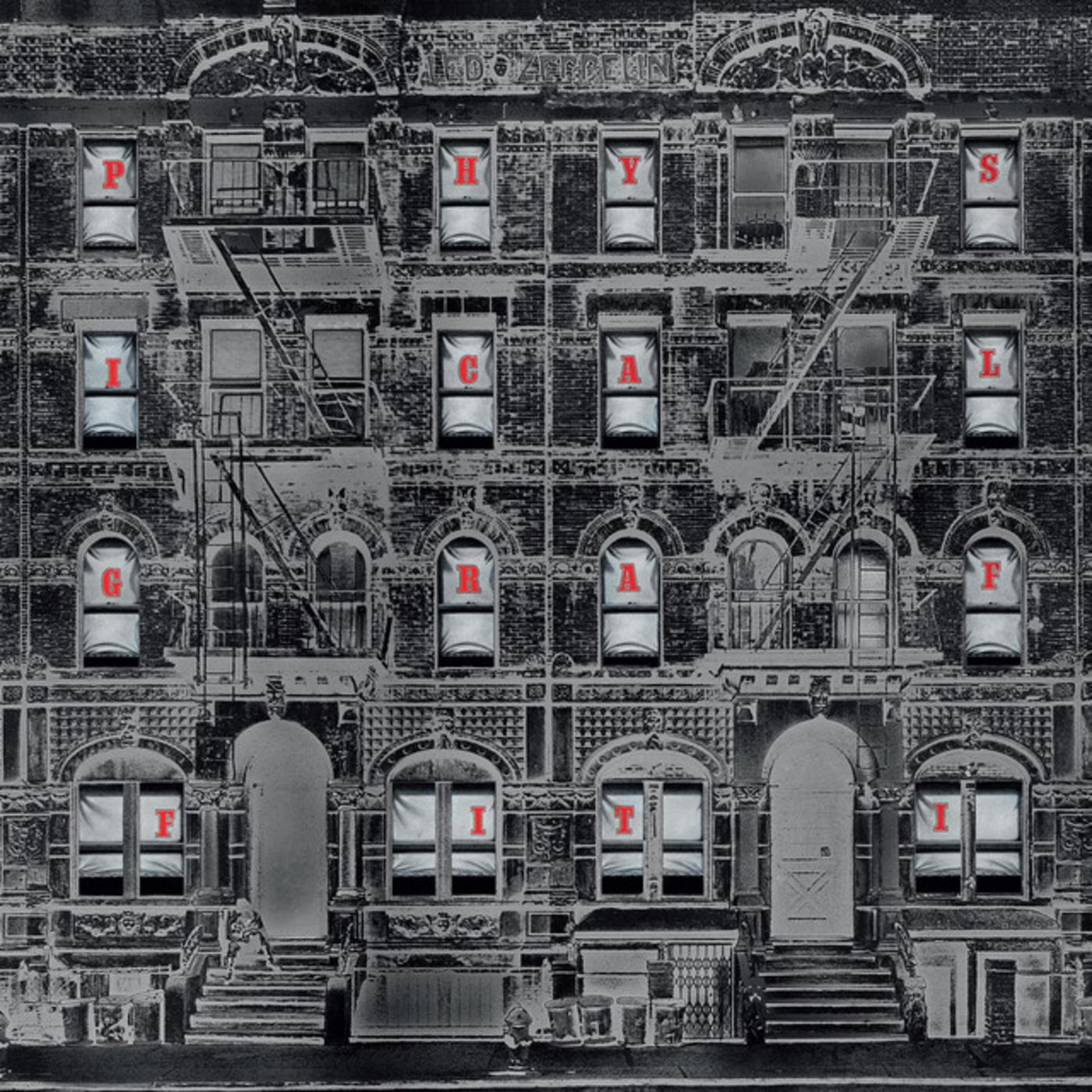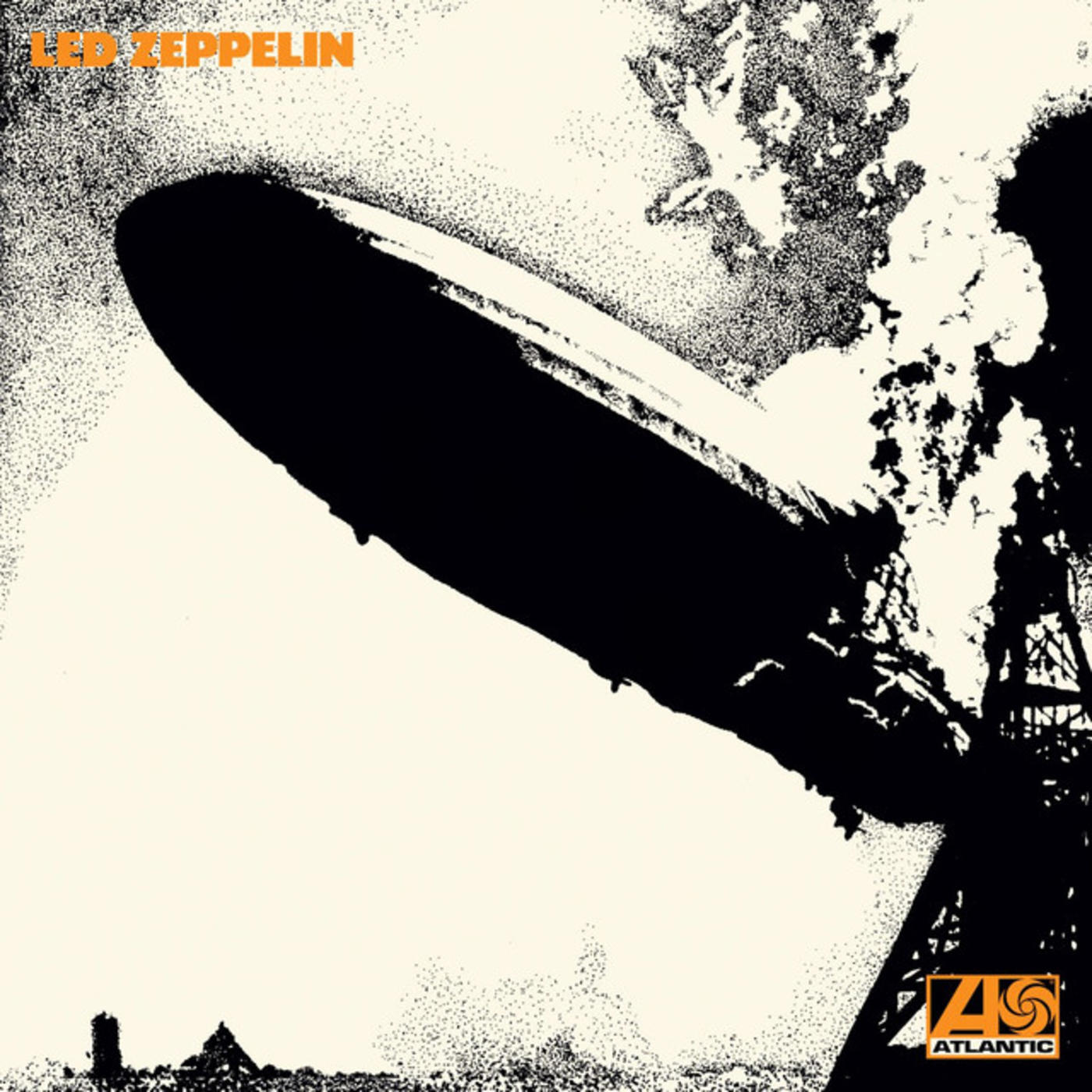Once Upon a Time in the Top Spot: Led Zeppelin, PHYSICAL GRAFFITI

42 years ago today, Led Zeppelin’s sixth studio album landed atop the Billboard 200, giving the band a chart-topping album in America for the fourth time in their career.
Although the whole of the album was produced by Jimmy Page, the contents of PHYSICAL GRAFFITI were taken from a variety of Led Zeppelin recording sessions, stretching as far back as July 1970. Technically, though, the recording of the album didn’t begin until November 1973…and even that’s not really accurate, since the sessions which were attempted by the band at that time didn’t end up amounting to anything. In fact, it wasn’t until January 1974 that they actually recorded material that turned up on the finished product.
The sessions which took place during January and February of 1974 led to the album versions of “Custard Pie,” “In My Time of Dying,” “Trampled Under Foot,” “Kashmir,” “In the Light,” “Ten Years Gone,” “The Wanton Song,” and “Sick Again.” The rest of the material on PHYSICAL GRAFFITI came from earlier sessions, however, and since we know you’re wondering about the specifics, we’ll provide those for you:
“The Rover” – May 1972, outtake from HOUSES OF THE HOLY “Houses of the Holy” – May 1972, outtake from – you guessed it – HOUSES OF THE HOLY “Bron-Yr-Aur” – July 1970, outtake from LED ZEPPELIN III “Down by the Seaside” – February 1971, outtake from LED ZEPPELIN IV “Night Flight” – December 1970-January 1971, outtake from LED ZEPPELIN IV “Boogie with Stu” –December 1970-January 1971, outtake from LED ZEPPELIN IV “Black Country Woman” – May 1972, outtake from HOUSES OF THE HOLY
So why did they decide to add these tracks to the album instead of just releasing the new material as it was?
“We had more material than the required 40-odd minutes for one album,” Page explained to Trouser Press in 1977. “We had enough material for one and a half LPs, so we figured let's put out a double and use some of the material we had done previously but never released. It seemed like a good time to do that sort of thing, release tracks like ‘Boogie With Stu’ which we normally wouldn't be able to do... [T]his time we figured it was better to stretch out than to leave off."
The fans certainly didn’t complain: in addition to topping the Billboard 200, PHYSICAL GRAFFITI also went to #1 in the UK and Canada and made the top five in Australia, France, Norway, Spain, Austria, and New Zealand.


